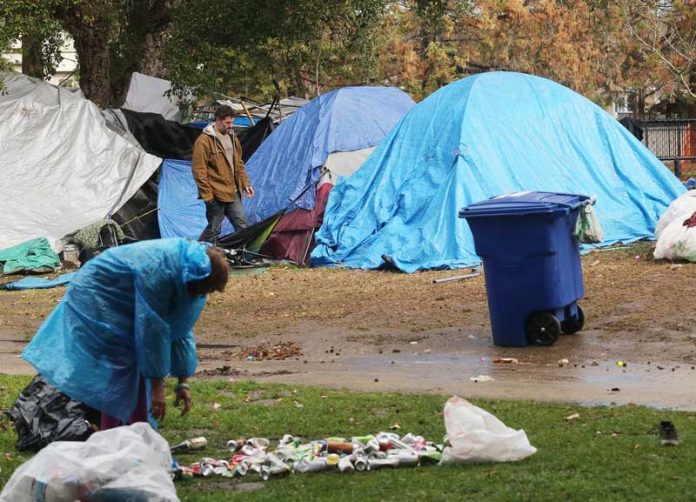
SANTA CRUZ COUNTY—The Santa Cruz County Board of Supervisors on Tuesday unanimously approved a four-part strategy to deal with the county’s homeless crisis, an ambitious three-year plan that has the goal of reducing by 50 percent the number of households experiencing homelessness by 2024.
The plan starts with the creation of Housing for Health, a coalition that will coordinate the efforts throughout the county and expand health and human services. At the heart of that agency’s philosophy is the idea that simply looking at the number of people who are already homeless is missing a large piece of the puzzle, said Housing for Health Director Dr. Robert Ratner.
“Because we will never get to a place where we’ve actually ended homelessness, if that’s the only lens we look at,” he said. “We really have to look upstream and look at how do we prevent people from losing their housing.”
The plan also includes finding ways to reduce homelessness, expanding programs and services that address the homeless population and expanding the county’s bank of permanent housing.
Among other things, Housing for Health will work with jurisdictions countywide to develop at least 734 new housing units by 2023, and expand the county’s capacity of rapid rehousing rental assistance programs.
The plan, called “Housing for a Healthy Santa Cruz,” has taken more than a month to develop. It aims to drastically reduce the time people stay in emergency shelters and transitional housing before being placed in permanent housing.
The supervisors will hear a progress report in August.
The goals include increasing the number of temporary housing beds from 440 to 600, rapid rehousing slots from 140 to 490 and the permanent supportive housing slots from 500 to 600.
Also included in the plan is to expand services at the county’s shelters, reduce eligibility barriers and provide outreach services to homeless people. In addition, the program will seek to reduce unmanaged homeless encampments.
According to a recent census of the county’s homeless population, about 2,167 people are homeless in Santa Cruz County on any given night. About 1,440 households—groups of people living together—are homeless every night.
County officials say that 10,150 low-income renters do not have access to an affordable home, and 75 percent of people considered extremely low income are spending more than half of their income on housing.
The new framework was created with the help of the Walnut-based analytics firm Focus Strategies. County officials worked with all jurisdictions in the county in developing it.
The supervisors gave a preliminary thumbs-up to a draft version of the plan on Nov. 10.
“Homelessness truly is a humanitarian crisis,” said Human Services Director Randy Morris. “Sometimes [in] these conversations, when we talk public policy, we lose sight of the fact that we have hundreds and hundreds in this community—thousands—of people in this community who have parents and siblings and friends they have lost touch with who are living unsheltered. And this is a very serious crisis with a lot of suffering.”
In separate action, the supervisors approved a proposal by supervisors Ryan Coonerty and Manu Koenig to identify sites throughout the county to set up temporary housing and parking sites, with the goal of 120 new beds.
Coonerty, who helped draft that ordinance, said the problem has grown since the pandemic started.
“We are housing 600 people more than we were at this time last year,” he said.
In all, the plans are expected to cost $65 million annually.












